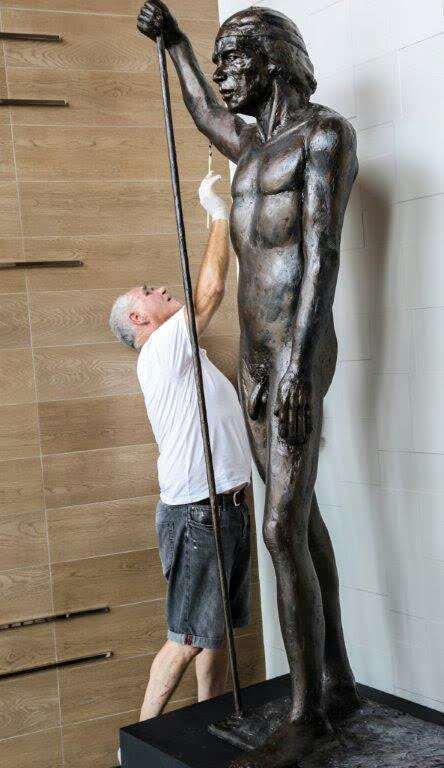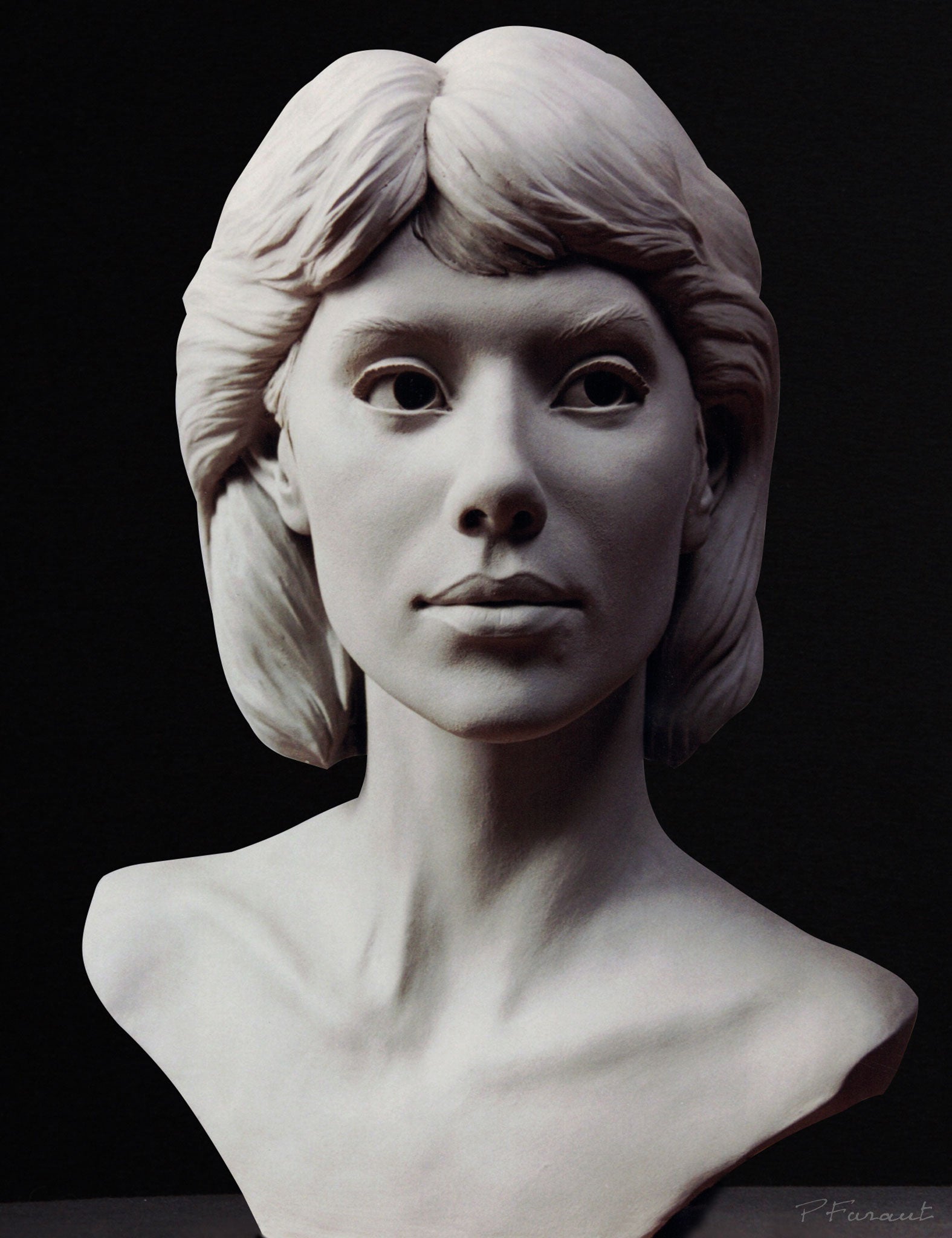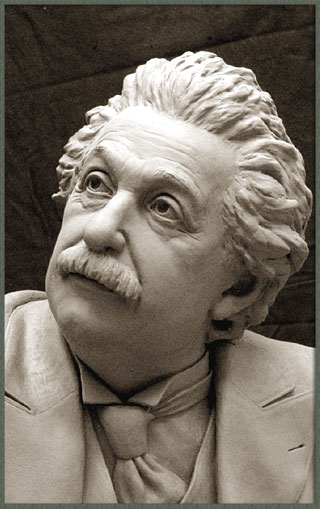Contemporary Marvels: Dive into the World of Contemporary Sculptures
Wiki Article
The Advancement of Sculptures: From Old to Modern
The Advancement of Sculptures: From Old to Modern. Robert C Hitchcock Sculptor.Sculpture, one of the earliest types of art, has been an important part of human world for centuries. From the old people of Egypt and Greece to the modern age, sculptures have actually developed, showing changes in imaginative techniques, products, and social impacts. This journey through time traces the advancement of sculptures, discovering the shifts in style, topic, and creative expression.
Starting with the old world, sculptures crafted from stone and later on bronze captured the essence of divine beings, leaders, and day-to-day life. The Renaissance duration observed a rebirth of classic sculpting strategies, as musicians looked for to emulate the elegant kinds of old Greek and Roman sculptures (Robert C Hitchcock Sculptor). In the modern-day period, musicians tested conventional borders, accepting abstraction and trial and error with brand-new materials
This expedition will dive into the varied development of sculptures, disclosing the rich tapestry of imaginative expression across various periods and cultures.

Ancient Sculptures: From Rock to Bronze
Old sculptures transitioned from being carved out of stone to being cast in bronze. Stone sculptures, while excellent in their own right, were limited by the nature of the product. Contemporary Sculptures.The intro of bronze as a tool for sculptures caused a revolution in artistic expression. Bronze provided carvers the possibility to develop intricate and realistic types that were not possible with stone. The process of casting bronze enabled for the production of numerous duplicates of a sculpture, making it possible for bigger distribution and conservation of these artistic masterpieces.
The transition from rock to bronze likewise saw a change in the topic of sculptures. While rock sculptures mainly depicted gods, sirens, and mythical numbers, bronze sculptures began to reflect a more comprehensive series of topics, consisting of everyday people and pets. This growth of topic showcased the adaptability and adaptability of the bronze medium.
Renaissance Rebirth: Forming in the Classic Design
The Renaissance revival of sculpture saw a revival in the classical style, building upon the innovations made during the transition from stone to bronze in ancient sculptures. During this period, artists sought to recreate the classic aesthetic and suitables of beauty that were common in old Greek and Roman sculptures.One of the vital features of the Renaissance rebirth was the emphasis on naturalism and the human type. Sculptors like Donatello and Michelangelo strove to record the physiological details and expressions of their topics with unprecedented precision. They studied the human body and incorporated their observations into their sculptures, leading to practical and realistic depictions.
An additional essential facet of the Renaissance rebirth was the expedition of viewpoint and deepness. Musicians made use of strategies such as contrapposto, where the weight of the body is shifted away, producing a feeling of motion and dynamism. They also experimented with various materials, consisting of marble and bronze, to attain a degree of sophistication and complexity in their sculptures.

Innovation and the Avant-Garde: Damaging Conventional Borders
Throughout the Modernism and Avant-Garde motions, carvers pushed the limits of standard artistic conventions. This period, which emerged in the late 19th and early 20th centuries, saw a significant change in the method artists came close to sculpture. Turning down the notion of art as plain replica, modernist artists sought to check out brand-new kinds, products, and concepts.
One of the essential attributes of modernist sculpture was the emphasis on abstraction. Sculptors relocated away from realistic representations and rather concentrated on catching the significance of the subject with streamlined types and geometric forms. This departure from conventional depiction permitted musicians to express their feelings and ideas in an extra subjective and personal fashion.

Contemporary Sculptures: Exploring New Materials and Concepts
With a focus on checking out new products and concepts, modern sculptures have actually transformed the field of art. Artists today are pushing the limits of typical sculpture by using cutting-edge products and trying out with abstract ideas. These sculptures test conventional notions of form, significance, and materiality, inviting customers to get redirected here take part in a brand-new and thought-provoking artistic experience.Contemporary carvers are accepting a variety of materials, consisting of plastic, glass, metal, and even raw material. They are not restricted to the conventional tool of rock or clay, permitting greater liberty of expression and trial and error. This change in the direction of unconventional products has actually opened new possibilities for artists to create sculptures that are dynamic, interactive, and aesthetically striking.
Along with discovering new products, contemporary sculptures additionally dive right into complicated and abstract principles. Musicians are now exploring motifs such as identification, social concerns, and the setting, utilizing sculpture as an effective medium for social discourse and introspection. These sculptures challenge visitors to think seriously and engage with art on a deeper level, stimulating discussions and prompting emotional reactions.
Global Impacts: Sculptural Practices From Around the Globe
Sculptural traditions from various regions of the globe have actually dramatically formed the evolution of sculptures throughout history. The worldwide influences on sculpture have actually been diverse and have added to the splendor and range of artistic expressions. From the old people of Egypt, Greece, and Rome to the intricate makings of Asian societies, each region has actually developed its unique sculptural practices that have actually affected musicians across time.In old Egypt, sculptures were produced largely for religious and funerary functions. The famous sculptures of pharaohs and gods, such as the Great Sphinx and the breast of Queen Nefertiti, display the Egyptians' mastery of stone carving and their belief in the afterlife.

In ancient Rome, sculpture offered both artistic and political functions. Roman sculptures typically illustrated emperors, generals, and mythological numbers, showing the power and magnificence of the empire. The marble statue of Augustus of Prima Porta and the huge Arc of Constantine are remarkable examples of Roman sculptural success.
Eastern sculptural traditions, particularly in India, China, and Japan, have likewise had a profound influence on the evolution of sculptures. Indian sculptures, such as the elaborately carved temples of Khajuraho and the enormous statues of Buddha, show a rich blend of spiritual, mythological, and architectural components. Chinese sculptures, characterized by their great craftsmanship and focus to information, frequently portray divine beings, pets, and legendary figures. Japanese sculptures, influenced by Buddhism, emphasize simplicity and harmony, seen in the calm statuaries of Buddha and the classy art of bonsai.
The worldwide impacts on sculpture continue to advance in the contemporary period. As we look to the future, it is particular that the international impacts on sculpture will proceed to shape and redefine this ancient art kind.
Verdict
To conclude, the development of sculptures has actually seen a shift from ancient stone and bronze functions to the classic resurgence during the Renaissance. This was adhered to by the breaking of typical borders via innovation and the avant-garde motion. Today, contemporary sculptures discover brand-new products and concepts, while likewise drawing motivation from international sculptural customs. The journey of sculptures reflects the ever-changing imaginative expressions and social influences throughout history.From the ancient civilizations of Egypt and Greece to the modern-day era, sculptures have developed, showing modifications in imaginative techniques, materials, and social impacts.Beginning with the ancient globe, sculptures crafted from rock and later on bronze recorded the significance of deities, rulers, and everyday life.Ancient sculptures transitioned from being carved out of rock to being cast in bronze. While stone sculptures mostly illustrated gods, sirens, and mythical numbers, bronze sculptures began to mirror a wider variety of subjects, consisting of everyday individuals and pets.In conclusion, the advancement of sculptures has seen a change from old rock and bronze functions to the classical resurgence during the Renaissance.
Report this wiki page